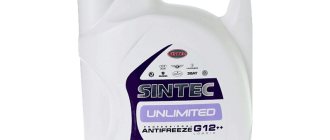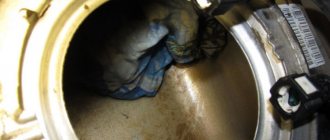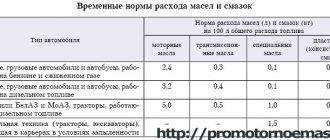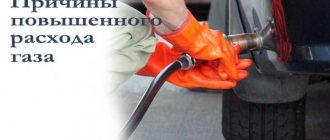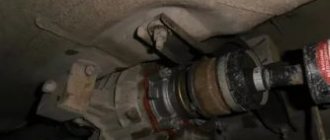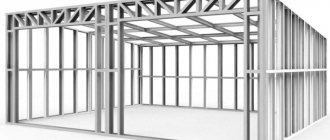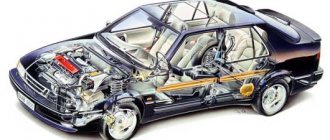How many kilograms are there in a liter of methane?
Mass is a characteristic of a body, which is a measure of gravitational interaction with other bodies.
Volume is a quantitative characteristic of the space occupied by a body, structure or substance.
Density is a physical quantity defined as the ratio of body mass to body volume.
The relationship between liters and kilograms of methane is determined by a simple mathematical formula:
V – volume; m – mass; p – density.
In the calculation, the density of methane = 0.7168 kg/m3 was taken.
The density of methane can vary depending on temperature and pressure. You can find the exact density of methane in reference books.
See also the universal program for converting liters to kg for any substance depending on its density.
If you need to convert m3 to tons, then see the program for converting tons to m3.
If you need to convert kg to m3, then see the program for converting kg to m3.
Question: How many kg are there in a liter of methane?
Answer: 1 kg of methane is equal to 1395.1 liters.
Question: How many liters are there in a kilogram of methane?
Answer: 1 liter of methane is equal to 0.0007168 kilograms (kg).
You can quickly solve this simple mathematical operation using our online program. To do this, enter the initial value in the appropriate field and click the button.
This page presents the simplest program for converting kilograms of methane into liters. With this online calculator you can convert liters of methane to kg and back in one click.
The number of liters contained in a cubic meter of gas is not as simple a question as it might seem at first glance, given the peculiarities of using gas fuel. Let's consider ways to convert the volume of gases used as fuel, taking into account their characteristics.
How to convert propane-butane from kilograms to liters?
In order to calculate the number of liters in one kilogram of gas, you need to use the formula: Liter=Kilogram/Density
So, 27 cubic meters of propane-butane gas are equal to 114 liters of liquefied gas. In order to avoid using formulas each time when converting m3 to liters, we derive the ratio: 27 m3 = 107 l, therefore 1 m3 = 4.2 l. Using reference data and simple formulas, you can easily make calculations that help in drawing up estimates.
The number of liters contained in a cubic meter of gas is not as simple a question as it might seem at first glance, given the peculiarities of using gas fuel. Let's consider ways to convert the volume of gases used as fuel, taking into account their characteristics.
Physical meaning of translation
In a physical sense, everything is quite simple. The translation is carried out in the same way for any gases, liquids or bulk materials as follows:
- 1 cubic meter contains 1000 liters,
- 1 liter equals 0.001 cubic meters
- the table shows the quantity contained in 1 cube (1 cube = 1000 cubic decimeters, etc.).
For example, 15 cubic meters of natural gas used by the meter equals 15,000 liters. When converting these values, the temperature of the fuel, the amount of impurities and other factors do not matter.
Use of liquefied gas
It’s a little more complicated with liquefied gas. It is widely used:
- in modern industrial production;
- in thermal and electric power engineering;
- as a reserve stock during the period of the most intensive consumption by the population;
- as a replacement for traditional gasoline or diesel fuel for road transport;
- for domestic purposes.
In the household, it is advantageous to use liquefied gas in cylinders for the operation of gas-consuming household appliances, provided there is no centralized supply line.
How many cubic meters of technical gas are in a household cylinder?
Gas cylinders https://www.nvph.ru/gazovie_ballony are designed for storing and transporting gases of various types. A regular cylinder, which is most often used, has a volume of 50 liters, but since each gas has a different molecular weight, the amount of gas it holds varies.
| Technical gas | The mass of pure gas in a cylinder is 50 liters | |
| 1. | Oxygen | 10-12 kg |
| 2. | Nitrogen. | 10-12 kg. |
| 3. | Argon. | 10-12 kg. |
| 4. | Carbon dioxide. | 24.6 kg. |
| 5. | Helium. | 8-10 kg. |
| 6. | Propane. | 22 kg. |
| 7. | Acetylene | 6 kg. |
One propane cylinder for heating a house is enough for a maximum of a week, depending on the size of the premises. For example, to heat a house with an area of 110 square meters. m in severe frosts, you will need one cylinder per day. If you use a gas cylinder only for cooking at home, it will last for a month or more.
When using cylinders when welding, it is necessary to calculate that one 10-liter cylinder will be enough for 300 minutes of work. Otherwise, you should rely on the power of the equipment and the duration of the work.
Calculation example
It is necessary to determine how many cubic meters of gas one cylinder with a 50-liter propane-butane mixture contains if you pass its contents through a gas meter:
- the mass of the gas mixture pumped into it is about 21 kilograms;
- volume in m³ is equal to 50/5 = 10;
- after adjusting for the filling of the cylinder, we get 10 × 0.85 = 8.5 m³.
This indicator may vary depending on the ambient temperature, since when it decreases, the pressure inside the container decreases, with a corresponding decrease in the volume of fuel.
But the use of liters of gas in cubic meters is only relevant as an approximate calculation. When purchasing this type of fuel, kilograms of the gas mixture and the pressure inside the container are important, and when using individual metering devices, a standard unit of measurement is used - cubic meters, the conversion procedure of which does not depend on the composition of the gas and is determined by a simple arithmetic calculation in the ratio of 1 to 1000.
How to convert cubes to liters? You will find out the answer to this question by reading this article.
The content of the article:
- How many liters are in 1 cubic liter?
- Formula for converting the volume of a cube into liters
- Formula for converting liters to cubic meters
- Examples of converting liters to cubes
- Examples of converting cubes to liters
How to convert cubes to liters?
Students often have difficulty converting one unit of measurement to another. Hence a lot of questions like:
- How many liters are in a cube?
- 1 cubic meter - how many liters is it?
- How many liters are in a cube of water?
- How many liters of gas, propane, gasoline, sand, earth, expanded clay are in a cube?
- How many liters of methane, liquefied gas are in a cube?
- How to convert cm cubed (cm 3) or dm cube (cm 3) to liters?
- A cube of concrete, gasoline, diesel fuel, diesel fuel - how many liters is that?
How many cubic meters of gas are in a liter of liquefied propane?
With a density of propane in the liquid state of about 508 g/l and a molecular weight of 44.g/mol , all this, when divided, turns out to be 11.5192 mol in one kilogram of liquid propane gas. It follows that one liter of liquid propane contains 11.51 mol of gas, which upon evaporation under normal conditions, it will occupy a volume of 22.4 liters. From this we get 11.51 mol x 22.4 l/mol = 257.88 l. Knowing that in one cubic meter of gas 1000 liters by 257.88 liters and get 3.877 liters in one cubic meter of gas from a cylinder. Knowing how many kilograms were filled into the cylinder we can approximately calculate how many cubic meters of gas we need for heating
How many gas cylinders do we need for heating?
The weight of a 50-liter cylinder filled to 85% is 23.375 kg. This corresponds to 43 liters of liquid fuel or a total gas volume of 10 m 3. At the same time, it contains at least 22.4 kg of propane. The best option is pure propane, but according to GOST 15860-84, propane must be at least 60%. In order to understand how much one cylinder is enough, let’s turn to the manufacturer’s instructions, which say that a 24 kW boiler consumes approximately 2 kg/h of propane at maximum power. Which means that when operating at full capacity, 50 liters will last for 22.4/2-11.2 hours.
The gas is liquefied, enters cylinders and in this state of gas production can begin. As a result of gas pressure treatment, it turns into a liquid state, which allows you to pump a larger volume of gas into cylinders.
Therefore, at sub-zero temperatures outside, the Propane-Butane mixture, when leaving the cylinder, turns into a gaseous state. And since Propane has a lower evaporation temperature, it evaporates first, which leads to the formation of frost on the cylinders and a decrease in gas pressure at the outlet evaporator. Therefore, operation of the boiler with one gas boiler is impossible due to the small evaporation area.
But this main drawback can be eliminated using a gas comb,
which will connect several boilers in a cascade, which will lead to an increase in pressure.
And to evaporate Butane, you need to heat gas cylinders using an air mixture from the boiler room, feeding it through a corrugated pipe, or using a thermal blanket for gas cylinders. This will allow you to save up to 20% of gas by heating the butane and its complete evaporation from the cylinder.
Read more: Replacement Dashboard Accent
We connect the cylinder to the heating boiler through a device for reducing pressure (reducer).
While the gas passes through the reducer, it takes on its initial gaseous state, and upon entering the boiler, it is burned and releases a fairly large amount of heat.
Advantages of heating with gas cylinders:
- Gas is an environmentally friendly fuel.
- Stability: when heating with gas, the pressure in the pipes is stable.
- Gas does not present any difficulties in operation.
In recent years, during the construction of new houses, they began to carefully consider heating with gas cylinders.
Also, when using a heating system with gas cylinders, you can use warm water heated by the system.
Now many people are trying to use propane-butane in cylinders, because it has many advantages:
- It is not difficult to find in stores or on the market.
- Gas has a high calorific value.
- It is safe to use.
- The equipment is durable.
Gas is supplied for operation automatically.
A big plus is that heating with gas is also possible when using other types of heating (Wood or diesel fuel).
Gas cylinders must be stored correctly:
- Cylinders must be located in a protected place from exposure to sunlight or precipitation.
- You can only use cylinders that have been faultlessly tested for serviceability.
- Gas cylinders should not show corrosion or mechanical damage.
- Residual pressure is not less than 0.05 MPa.
- The temperature should not exceed +45 degrees Celsius in a room with cylinders.
- The placement of the cylinders is 0.5 from the gas stove and 1 m from the battery.
A mandatory requirement for storing gas cylinders is the presence of a cabinet. A cabinet with cylinders should not be installed in rooms where there are cavities, since the gas is heavier than air and in case of a leak it will accumulate in one place. In this way, explosive concentrations can be reached.
The above rules cannot be neglected!
Disadvantages of heating with gas cylinders:
1. When purchasing gas from unverified suppliers, problems may arise with unstable operation of the system due to a larger amount of Butane.
2. And of course, the most important disadvantage of gas heating is the risk of explosion. Undoubtedly, this heating system should be installed by a real specialist in his field.
Conclusion
Today, this heating system is used in houses located outside the city. Heating with liquefied gas should only be installed by a specialist in compliance with all installation rules. Under such conditions, residents of country houses can be confident in the operation of this system.
Published
- Autonomous gasification of a private house. Gas holder
- SIGMA Kentatsu Furst - low-power gas boilers.
Today, the most common type and method of heating real estate in the suburbs, country towns and villages is heating the house using gas cylinders.
When performing construction work, for example, when laying or repairing certain types of roofing, liquefied gas is used. When estimate documentation is drawn up for work related to the use of gas, estimators are sometimes faced with a problem: how to convert cubic meters into liters.
Density is the quantitative value of mass in kilograms placed in a cubic meter. A very ambiguous value and depends on many factors. The main one is temperature. So, the density of propane-butane can vary from 490 to 619 kg/m3.
Read more: How to transfer money knowing only the card number
What do you need to know?
Cubic meter (m³)
is a unit of measurement of volume in the SI system. One cubic meter is equal to the volume of a cube with a side of 1 meter. This unit is a derivative of the SI unit meter, which is defined as "the distance traveled by light in a vacuum in a period of time equal to 1⁄299,792,458 seconds."
Liter (l)
- a non-systemic metric unit of volume equal to one cubic decimeter (dm³), 1000 cubic centimeters (cm³) or 10⁻³ cubic meter (m³).
We must immediately make a reservation that a simple calculation based on how many liters in a cube does not work in our case. 1 m3 contains 1000 liters of air, water or other substance in normal condition. However, the cylinders contain liquid gas, and it is there at high pressure and low temperature. To use the substance, it must be brought into the gaseous phase, and its volume increases many times over.
The parameters and dimensions of oxygen cylinders for propane, butane and their mixtures can be viewed according to GOST 15860-84. Currently, four types of these products are used, with volumes of 5, 12, 27 and 50 liters.
To convert propane butane gas from cubic meters of gaseous to liters of liquid gas, you need to know the density of the liquid gas and the specific gravity of the substance. Density depends on the temperature and proportions of the propane-butane mixture, and is easily determined using tables. The specific gravity of propane-butane is determined in laboratory conditions. In calculations we can use the average indicator.
How many liters are in 1 cubic liter?
Let's start with a lyrical digression, namely from a school physics course. It is known that the generally accepted unit of volume measurement is the cubic meter. 1 cubic meter is the volume of a cube whose side is exactly one meter.
1 cubic meter
This unit is not always convenient and it is for this reason that others are very often used - liters - also known as cubic decimeters and cubic centimeters.
As practice has shown, the most convenient unit of volume measurement is the liter, which is the volume of a cube whose length is 1 dm or 10 cm. Thus, we find that all the questions of how to convert a dm cube into cubes are equivalent to the question: how to convert liters into cubes, because 1 dm. cube = 1 liter.
1 liter
Formula for converting the volume of a cube into liters
Formula for converting liters to cubic meters
How to convert liters of gas to cubic meter
The standard unit for measuring volume is the cubic meter. However, in everyday life a smaller non-systemic unit is often used - the liter. Knowing the volume of a substance in liters, it is easy to convert it to cubic meters, and vice versa. But when measuring the volume of gas, liters are usually used for liquefied gas, and cubic meters for regular (mainline) gas.
You will need
- Calculator
Instructions
1
To convert liters of gas to cubic meters, divide the number of liters by 1000. To convert cubic meters of gas to liters, use the opposite rule: multiply the number of cubic meters of gas by 1000. In the form of formulas, these simple rules can be written as follows: Km? = Kl / 1000, Kl = Km? * 1000, where: Km? - the number of cubic meters, and Kl - the number of liters.
2
As a rule, the volume of liquefied (under high pressure or low temperature) gas enclosed in various containers (cylinders) is measured in liters. Cubic meters usually measure the volume of gas at atmospheric (or low) pressure. To convert liters of liquefied gas into cubic meters of regular gas, in addition to the number of liters, you need to know its chemical composition, pressure, temperature or density and mass. It should be noted that cylinders, as a rule, are filled with liquefied gas no more than 80%. For rough calculations, we can accept the following fact: when one liter of liquefied gas (propane) evaporates, 200 liters of gas are formed. Those. to convert the amount of liquefied gas in liters to cubic meters, use the following formula: Km? = Kl / 5 where Kl is the number of liters of liquefied gas.
3
Example: What gas consumption will a household gas meter show if a standard household gas cylinder is passed through it? Solution: A standard “propane” gas cylinder has a volume of 50 liters. Household (kitchen) gas consists of a mixture of propane and butane. A standard refill contains 21 kg of this gas mixture. Since the molar mass of propane and butane is different, and the ratio of the amount of gases is usually unknown, using the above formula, we get: Km? = 50/5 = 10 cubic meters.
4
For compressed gases (not to be confused with liquefied gases), use the following approximate formula: Km? = Kl * D / 1000, where D is the gas pressure in atmospheres.
5
Example: What volume of oxygen is contained in a standard cylinder at a pressure of 250 atmospheres? Solution: 40-liter cylinders are used to store gases such as nitrogen, argon, and oxygen. Therefore, the volume of oxygen at normal (atmospheric) pressure will be: Km? = 40 * 250 / 1000 = 10 cubic meters.
Examples of converting liters to cubes
And now, armed with all the necessary knowledge, we can proceed directly to the calculations.
| Problem #1: How many liters are in 0.5 cubes? Solution: Using the above formula we get: 0.5 * 1000 = 500 liters. Answer: 0.5 cubes contain 500 liters. | Problem #6: How many liters are in 300 cubic meters? Solution: 300 * 1000 = 300,000 liters Answer: There are 300 thousand liters in 300 cubic meters. |
| Problem #2: How many liters are there in 1 cubic meter? (the simplest) Solution: 1 * 1,000 = 1,000 liters. Answer: 1 cube contains 1,000 liters. | Problem #7: 5 cubes - how many liters? Solution: 5 * 1000 = 5,000 liters Answer: 5 cubic meters is 5 thousand liters. |
| Problem #3: 2 cubes – how many liters? Solution: 2 * 1,000 = 2,000 liters. Answer: 2 cubes contain 2,000 liters. | Problem #8: 6 cubic meters is how many liters? Solution: 6 * 1000 = 6,000 liters. Answer: 6 cubes contain 6 thousand liters. |
| Problem #4: How many liters are in 10 cubes? Solution: 10 * 1000 = 10,000 liters Answer: 10 cubes contain 10 thousand liters. | Problem #9: How many liters are 4 cubes? Solution: 4 * 1000 = 4,000 liters Answer: 4 cubes contain 4 thousand liters. |
| Problem #5: 20 cubic meters is how many liters? Solution: 20 * 1000 = 20,000 liters Answer: 20 cubes contain 20 thousand liters. | Problem #10: How many liters are 500 cubic meters? Solution: 500 * 1000 = 500,000 liters Answer: There are 500 thousand liters in 500 cubic meters. |
